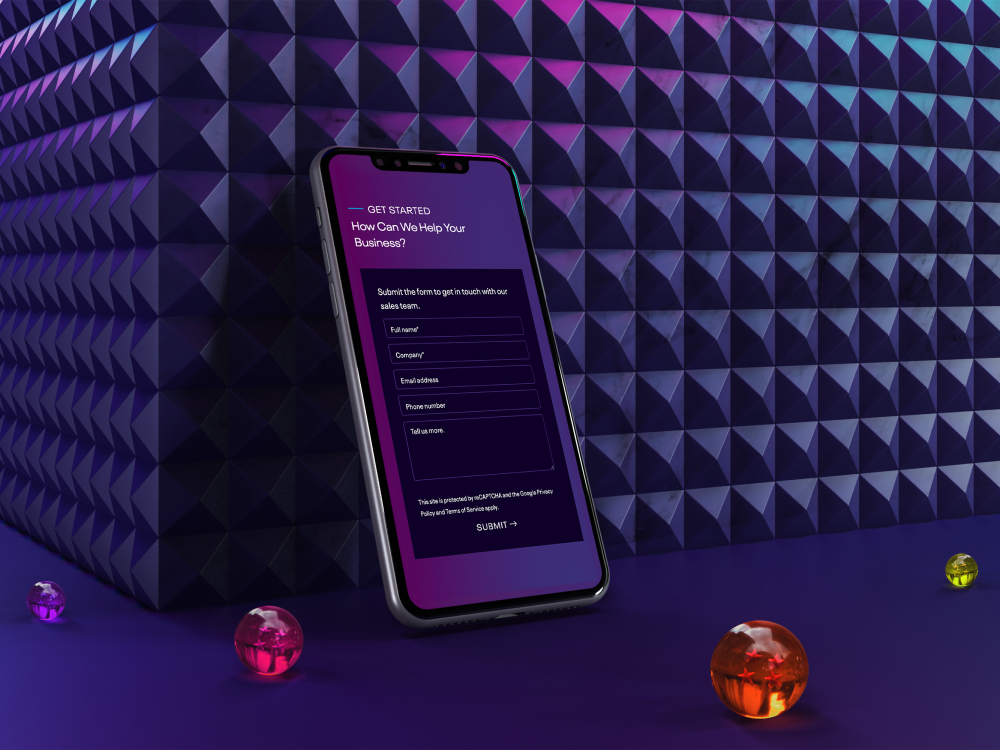INSIGHTS
In 2025, a strong digital strategy is no longer optional. With fast-changing technology and rising customer expectations, businesses need more than tactics. They need a clear, adaptable approach that connects every part of their marketing to business growth. In this guide, we’ll break down the key steps executives should take to build a strategy that performs now and evolves with the market.
What Makes a Modern Digital Strategy Work
Successful strategies are flexible and data-informed, but never lose sight of the people behind the numbers. They combine creativity, performance, and insight into one cohesive system that evolves as the market shifts. The real difference comes from alignment between teams, goals, channels, and messaging. When everything works together, you’re able to not only reach more people but also create lasting connections that drive results over time.
Step 1: Reevaluate Your Approach to Match 2025 Realities
Digital marketing is evolving fast, and strategies that worked a few years ago may not hold up today. Consumer behavior has shifted, platforms are changing, and technology is playing a bigger role in how brands connect with their audiences. To stay competitive, business leaders need to examine how their current marketing approach aligns with today’s landscape and where it might be falling behind.
Audit How AI and Automation Fit Into Your Workflows
Evaluate where automation is already supporting your marketing efforts and where it could reduce manual workload. Look for opportunities to integrate AI tools in areas like campaign optimization, content generation, and data analysis while keeping human oversight in place for strategy and tone.
Assess Personalization and Speed Across the Funnel
Evaluate how effectively your marketing delivers fast, tailored experiences. Use your data to segment audiences and personalize content at every stage. Identify slow points in the customer journey and streamline them. In 2025, speed and relevance are critical, as customers expect instant value and will move on quickly if it’s missing.
Review the Effectiveness of Legacy Channels
Revisit your traditional marketing efforts to see what’s still working. If channels like print ads, radio, or mass email campaigns are no longer driving results, it may be time to shift focus. Prioritize platforms where your audience is most engaged, and experiment with modern formats that better match current content consumption habits.
Unify Marketing and Sales Goals
Break down silos between your marketing and sales teams by aligning on shared objectives, metrics, and messaging. Collaborate on lead qualification, content strategy, and CRM processes to create a seamless customer journey. When both teams work together, conversion rates improve and your entire funnel becomes more efficient and effective.
Update Your Targeting Strategy for a Privacy-First Web
Audit your data collection methods to ensure they comply with new privacy standards. Replace reliance on third-party cookies with first-party data strategies like email opt-ins and on-site behavior tracking. Transparent, consent-based targeting not only protects your business, but it also helps build lasting trust with your audience in a changing digital landscape.
Step 2: Set Clear Goals and Measurable KPIs for Growth
Every effective marketing strategy starts with clarity. Before launching campaigns or testing new platforms, you need to define success and how you’ll measure progress along the way. Whether you’re focused on driving revenue, building brand equity, or entering new markets, setting the right goals will guide every decision that follows. It also helps teams stay aligned, prioritize resources, and adjust when things shift.
Define Revenue and Awareness Goals Separately
Clarify whether your focus is on generating leads and sales or increasing visibility and recognition. Each objective requires a different approach, and most businesses need a mix of both. Clearly separating these goals ensures your team can prioritize effectively, measure accurately, and choose the right tactics for each part of your marketing strategy.
Select KPIs That Reflect True Business Outcomes
Choose metrics that tie directly to growth, not just surface-level engagement. Prioritize KPIs like customer acquisition cost, return on ad spend, and conversion rate over vanity numbers. These indicators help you understand whether your marketing efforts are actually driving revenue and retention, not just clicks and impressions.
Build Timelines With Clear Milestones
Create a roadmap that breaks larger goals into smaller, trackable milestones. Outline what success looks like at 30, 60, and 90 days or by quarter. Regular check-ins help your team evaluate progress, pivot when needed, and maintain momentum. A structured timeline also gives leadership visibility into how campaigns evolve over time.
Step 3: Build a Flexible, Multichannel Strategy
A strong digital strategy uses the right combination of channels to engage your audience across the whole buyer journey. That means building a flexible framework that integrates paid, organic, and owned efforts into one cohesive system. When your channels work together, you create a more seamless experience for your audience and stronger results for your business.
Integrate Your Channels Around a Unified Strategy
Instead of spreading efforts thin across multiple platforms, build campaigns that share messaging, assets, and goals across channels. This creates a more cohesive experience for your audience and improves performance. A fully integrated strategy helps each piece of your marketing reinforce the others, leading to better engagement, recall, and results.
Balance Paid, Organic, and Owned Media
Find the right mix of media based on your goals and audience behavior. Use paid channels for quick visibility, organic content to build trust and authority, and owned assets like email and your website for long-term control. Each channel plays a different role, and success comes from using them together, not in isolation.
Use Social Media at Every Stage of the Funnel
Social platforms can do more than raise awareness. With the right content and targeting, they can nurture leads, re-engage past visitors, and convert prospects. Map your social content to funnel stages (top, middle, and bottom) so every post or ad plays a strategic role in moving users closer to action.
Tailor Your Channel Strategy to Your Business Model
B2B and B2C audiences respond differently. B2B efforts may require deeper education and longer sales cycles, while B2C audiences often look for quick, product-focused content. Build your multichannel plan around your audience’s journey and decision-making style so each channel meets their specific expectations.
Align Messaging Across All Platforms
Whether a customer finds you through search, social, email, or a display ad, your message should sound and look like it came from the same brand. Consistency builds familiarity and trust, helping you make a stronger impression and guiding users toward the next step, no matter where they first connect with you.
Use Automation to Streamline Campaign Management
Automation tools help reduce the manual labor of running campaigns across multiple channels. Use them for scheduling, optimization, segmentation, and reporting. With the right setup, automation ensures your campaigns stay consistent and effective while giving your team more time to focus on strategy and creative thinking.
Step 4: Use Data and Analytics to Drive Smarter Decisions
Data turns good strategies into great ones. While creative still matters, the ability to measure, adjust, and optimize in real time gives modern marketing its edge. With the right analytics in place, you can see what’s working, fix what isn’t, and make smarter decisions across every campaign. A data-driven marketing strategy allows you to confidently allocate budget, personalize outreach, and scale what drives results.
Monitor and Adjust Campaigns in Real Time
Use real-time data to stay agile. Instead of waiting for post-campaign reports, monitor performance as it unfolds. Shift budgets, test new creative, or tweak targeting mid-flight based on what your metrics reveal. This kind of active management helps prevent wasted spend and ensures you maximize return while the campaign is still live.
Use Audience Insights to Sharpen Targeting
Analytics reveal patterns in how users engage, convert, and interact with your brand. Study these trends to create audience segments that reflect real behavior, not just demographics. Refined targeting means your message reaches the right people with the right offer, which boosts relevance, click-through rates, and conversions.
Translate Data Into Strategy-Level Decisions
Use reporting to connect marketing activity to business outcomes like revenue, customer growth, or retention. The right dashboards make it easy to spot opportunities, correct underperformance, and confidently guide high-level decisions.
What to Look for in a Digital Marketing Partner
The right partner can elevate your marketing from functional to transformational. Whether you’re outsourcing campaigns or augmenting your in-house team, your agency should bring more than just execution. Look for a partner that offers strategic insight, scalable capabilities, and a clear understanding of your business goals. Choosing a digital marketing partner is a long-term investment—one that should feel like a true extension of your team.
 Strategic Leadership, Not Just Execution
Strategic Leadership, Not Just Execution
An effective partner doesn’t just take orders…they also help you set the right course. Look for an agency that offers big-picture thinking, guides your marketing roadmap, and proactively brings new ideas to the table. Strategy should always come before tactics.
Expertise With Enterprise-Scale Campaigns
Running large, multi-channel campaigns requires more than basic digital skills. Your partner should understand how to manage complex workflows, coordinate with internal stakeholders, and deliver results across high-budget, high-impact initiatives.
Proven Results Across Channels
Ask for examples of success across paid media, SEO, email, content, and social. A well-rounded partner understands how each channel contributes to the bigger picture and how to get them working together for maximum return.
Alignment With Your Internal Marketing Goals
Your agency should complement your internal team, not compete with it. The best partnerships are built on collaboration, shared goals, and transparency. Make sure your partner understands your brand voice, reporting preferences, and long-term objectives.
Schedule a Consultation with an Orlando Digital Marketing Agency
Building a digital marketing strategy in 2025 requires more than a set-it-and-forget-it approach. It takes clarity, flexibility, and the right partners to help you adapt, scale, and succeed in a changing landscape. At Brandcoders, we’re more than just an Orlando digital marketing agency. We’re strategic partners that help brands grow through custom campaigns, data-driven decisions, and integrated creative. Whether you need full-scale digital support or a reliable Orlando web design agency to build the foundation, our team is here to guide your next move. Schedule a consultation with us today, and let’s build something designed to perform.
Talk to a sales agent today to jump start your project.
Call (407) 992-8877





